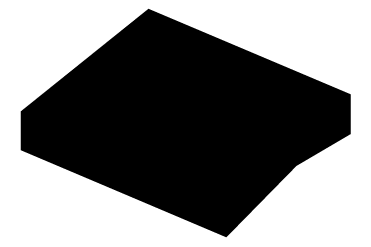the distance between then & now: james clayden, sydney nolan, david thomas, jenny watson, fred williams
09.07.25 - 02.08.25
BLOCKPROJECTS presents The Distance Between Then and Now, a cross-generational exhibition curated by artist and gallerist Jeremy Kibel.
Here, time is not measured in years but in layers of memory, perception, and material. Bringing together five Australian artists, Jenny Watson, James Clayden, Fred Williams, Sidney Nolan, and David Thomas, the exhibition showcases works that span decades yet share a sustained engagement with the temporal nature of image-making.
Each artist navigates time in distinct ways: through autobiographical symbolism, gestural abstraction, reimagined landscape, or conceptual stillness. This is not a historical survey, but a meditation on how the past continues to shape the present and how painting can hold that continuity.
James Clayden, whose practice spans painting, experimental cinema, theatre, and music, contributes his monumental triptych Morning Window #1, #2, #3 (each 244 × 122 cm). Dense and immersive, these works hover between presence and dissolution. Writing on Clayden’s 2020 exhibition at BLOCKPROJECTS, critic Adrian Martin described his painting as “a game of fleeting projection and recognition... the eternal mystery of the horizon.” In Clayden’s hands, that horizon is less a boundary than a zone of psychological tension where form dissolves, re-emerges, and remains suspended.
Fred Williams’s Fallen Tree (1966) is a compact yet commanding painting in which the Australian bush is orchestrated with precision. Dominant vertical trunks are interrupted by the angled fall of a single gum, all framed within a circular composition that asserts quiet structural control. Williams once remarked that when the landscape offered “no focal point,” it had to be built into the paint. In Fallen Tree, the circle becomes a point that concentrates the eye and resolves the visual tension between vertical, diagonal, and horizontal movement.
What might in life appear unremarkable, a tree downed among others, becomes, through colour, compression, and painterly texture, an event of perception. Bark emerges through dragged pigment; the ground lifts gently toward a clear horizon. The everyday becomes extraordinary. The painting reads like a chord: upright trunks sustain the rhythm, the fallen tree cuts across it like an interval, and the horizon holds the final note. It’s a work that evokes “the seeing of sound and the sound of seeing” a synaesthetic charge common to Williams’s most poetic abstractions. Exhibited in Dealer’s Choice at Rudy Komon Gallery in January 1968, Fallen Tree stands as a pivotal expression of Williams’s evolving formal language.
Sidney Nolan’s Parkville (1944–45), a rarely seen early work, offers a lyrical portrait of wartime Melbourne suburbia. With softened contours and flattened perspective, the work captures not topographical specificity, but the mood of a moment. Formerly held by the Sidney Nolan Trust and exhibited at ICA London in 1962, Parkville trades the theatrical intensity of the Ned Kelly series for a quieter, more introspective atmosphere where houses, trees, and telegraph poles settle into a gently pulsing rhythm.
Jenny Watson’s Anointing (1991), first exhibited at Annina Nosei Gallery in New York, is a symbolic, intimate work rendered on fabric. Pairing stylised figuration with diaristic text, Watson’s visual language, shaped by feminist discourse and punk sensibility, transforms lived experience into archetype. Her paintings blur the line between confession and construction, where memory becomes a shared, visual script.
David Thomas’s Untitled (1990-1991), exhibited publicly for the first time, was painted during his residency at the Cité Internationale des Arts in Paris. Modest in scale and meditative in tone, the work reflects Thomas’s sustained inquiry into perception, light, and temporality. “I’ve enjoyed the opportunity to revisit these earlier pieces from my younger days,” he reflects not with nostalgia, but with renewed presence. This quiet painting rewards slow looking, offering a stillness that lingers beyond the canvas.
While diverse in approach, what unites these five artists is not a shared movement or moment, but a profound commitment to painting as a durational, meaning-making act. Their works resist spectacle and urgency, instead favouring depth, return, and resonance.
As Jeremy Kibel observes: “This exhibition is not about nostalgia. It’s about what persists what painting still carries after everything else has passed.”
Each work here reflects a lifelong dedication to painting not as a performance or product, but as a process. These are not images designed for quick consumption or instant affirmation. They are shaped through quiet attention: to place, to material, to memory. And it is within that space between intention and perception, between then and now, that something enduring continues to unfold.














